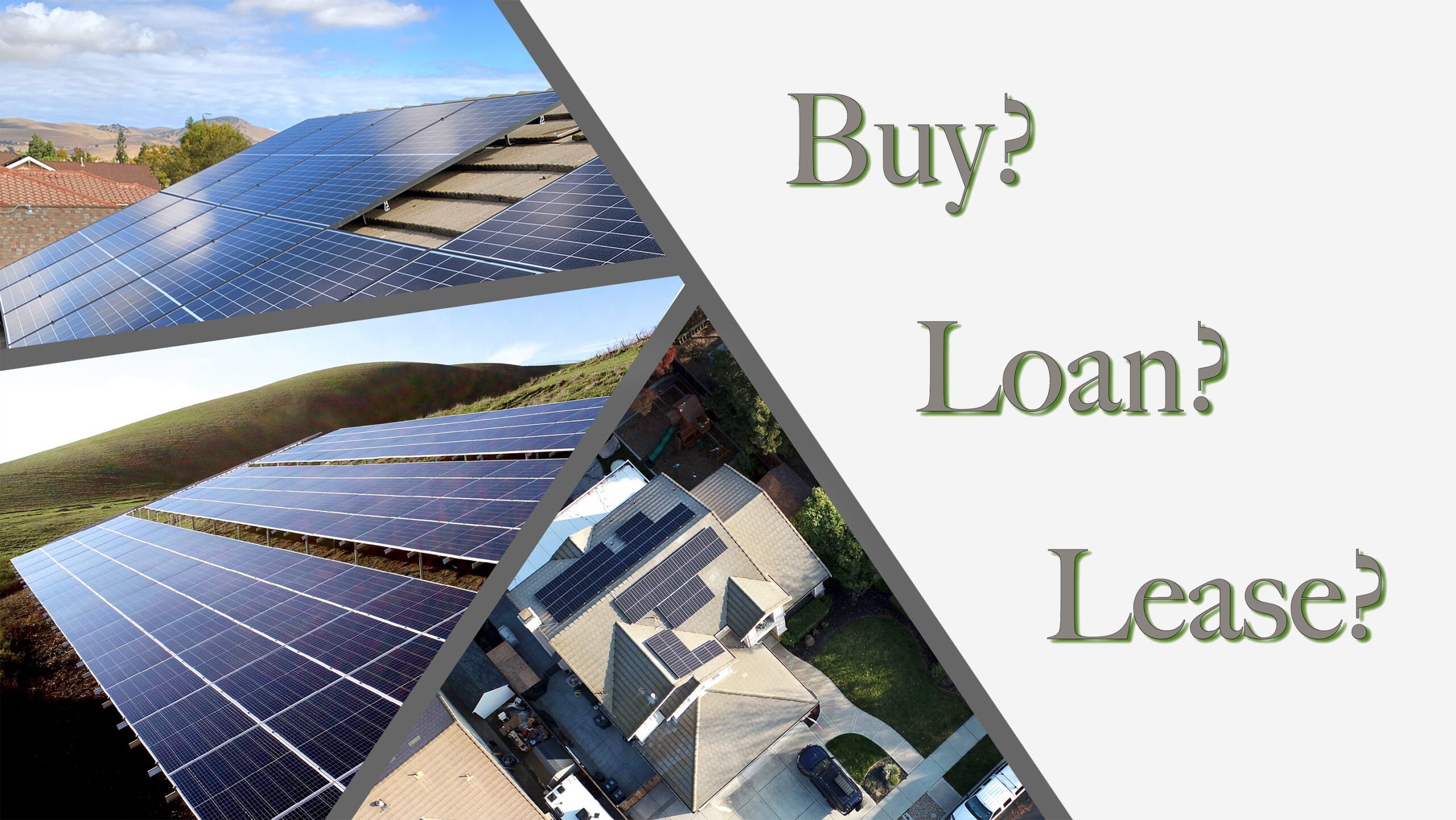Investing in solar power is a smart financial decision that millions of homeowners and businesses are making. Most solar power systems last for 25 years or more and generate considerable savings on utility bills – sometimes completely offsetting your monthly costs! As with all investments, going solar comes down to dollars and cents. What is the best way to pay for solar power? Three options make it easy for you to finance your solar system. Which one is right for you?
The Trifecta of Solar Financing
Buy, loan, lease – these payment options aren’t new concepts to home or business owners. So the process of financing a solar power system isn’t overwhelming. Each option has pros and cons, so the option that best fits your needs and goals will depend on several factors.
Buy to Save Big
Buying your solar power system with cash maximizes your savings potential. It amounts to pre-paying your utility bills for the next 25 years (or the life of your system). Another benefit of paying cash is you pay no interest–you pay the quoted price and that’s it. Owning the system also means you are eligible for any and all available state or federal rebates and incentives. However, a significant drawback of paying cash is that solar systems are expensive. If you want to buy your system outright, you will need $20,000–$30,000 on hand to pay for it. Another thing to consider is that you will be responsible for all maintenance and any needed repairs. These should be minimal, though, as solar systems are made from durable materials and are built to last for decades in all types of weather. Still, it would be wise to factor in the cost of any needed repairs not covered by warranty.
A Solar Loan to Own
A second way to own your solar system is through a solar loan. Solar loans are a popular financing option because you still get to enjoy the benefits of owning your system without having to pay any upfront costs. With a solar loan, you will still be able to receive any rebates or incentives associated with installing and using your solar energy system. You will be responsible for maintenance costs and repairs, but again, those should be minimal. The downside to taking out a loan is that you will have monthly payments with interest. But, often the loan payment is less than your current monthly utility bill, so this option is affordable for most homes and businesses. The savings aren’t as substantial as paying outright with cash, since you will be paying interest, but they’re still significant in the long run.
Taking out a Home Equity Line Of Credit (HELOC) or securing a PACE loan (Property Assessed Clean Energy) can help your solar payments be more budget-friendly. Both financing options are worth looking into and may make your solar goals more attainable.
Solar Leases
Leasing your solar system won’t yield as high of a return on your solar investment, but it still can be beneficial. With a solar lease, a third party installs your system on your property and then sells the power generated to you for a set rate. Typically, that rate will be 10-30% lower than what you currently pay for utilities. The Third-Party Owner (TPO) will be responsible for all repairs and/or maintenance needed for the life of the system. You would not be eligible for any rebates or incentives since those would go to the TPO.
Leasing can give a homeowner or business the ability to be more environmentally responsible without the expense of actually purchasing the solar power system. It generates the least amount of savings but it still is eco-friendly and will lower your utility costs overall.
Go Solar with Synergy Power
At Synergy Power, our in-house financial advisor can help you determine whether buying, leasing or taking out a loan for your solar power system is right for you. Call us today to see how easy it can be to go solar.
Contact Us Now

